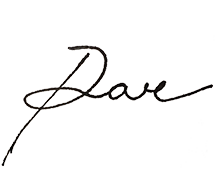Over the last four months, Andrew in San Fransisco, a Writer’s Group of Two client of mine, has been writing a short story.
Since April, we’ve met on Zoom every other week for our coaching sessions, workshopping his storyline, developing character arcs, discussing dialogue, and exploring the major drivers of drama and suspense that can keep a reader coming back for more.
He’s so close to finishing now, and I’m so proud of him.
Whether or not you’re a writer like Andrew — who, when we met, told me that his real goal with writing was to “express his creative soul” — you may be like a lot of folks (myself included!) who admit to having a troubled relationship with decision-making.
Why is it so hard to make good, clear, confident decisions?
And what can we do to help ourselves make better decisions, faster, and more efficiently?
Today, I have a simple, two-question process to share with you — one borrowed from the literary world of fiction-writing that Andrew and I used to great effect during the writing of his first-ever short story.
Applied as a streamlined decision-making technique, this two-question trick just might help you make better, clearer, faster decisions for weeks to come.
Try This Two-Question Trick for Better Decision-Making
The two questions that you can borrow from the world of fiction-writing and ask to help yourself make better decisions are, “What has to happen next?” and, “What wouldn’t happen next?”.
As simple as these questions may seem, when asked in this order, this literary technique can help you streamline your decision-making process.
How do they work?
- The first question compels you to get clear on the one and only next step that is necessary for you to advance towards your goals.
- The second question helps you eliminate any superfluous or extraneous “next steps” that might be relevant later, someday, or down-the-line, but not right now.
Let’s break how these two questions can help decision-making in your life, and in your creative journey.
The First Question, “What Has to Happen Next?”
Of all the choices and possibilities that are available to us at a given time, the only decision that really needs to be made is the single decision that absolutely must happen next.
As in, next next. Immediately next.
Not later. Not eventually. Not someday.
Ultimately, the “first next step” is the only immediate choice that we can, or need to, make.
When it comes to making decisions, I can be notoriously guilty of overthinking what immediate next step has to come first.
Typically, as a “visionary” kind of thinker, I’ll imagine or envision a possibility and identify it as my goal, then try to perfectly reverse-engineer every step backward from that goal until I arrive at this present moment.
In my mind, that’s how I try to create a “perfect roadmap” to success.
But in actuality, working backward from your expected goal — and trying to lay out every conceivable step you’ll take in the process of getting there — makes for a nightmarishly complicated decision-making process.
One simply cannot calculate every imaginable possibility, no matter how hard my brain might want to try.
Enter: this first nifty little guidepost of fiction-writing.
When you ask yourself, “What has to happen next?”, you interrupt the thinking process that wants to imagine every possible scenario, outcome, and pathway to succeeding.
Instead, as you let go of all the unnecessary “next steps” that may happen someday — but don’t need to happen right now — you’re all the more likely to clarify what immediate next step that needs taking. That’s the only real decision that needs to be made right now.
As for all the rest of the decisions that may come after? Trust yourself. You’ll know when the next decision needs making.
How “What Needs to Happen Next?” Helps Writing
This first question of effective fiction-writing is one that Andrew and I used to help solve for a pivotal inflection point in his short story.
About halfway through the tale, Andrew’s protagonist — a West Coast journalist tagging along with an eccentric billionaire and his team for the scoop on a VICE-style story about a new animal discovery in South America — was ceremoniously dismissed from the very room where the story was just about to happen.
The protagonist leaving the room was important for Andrew’s story because it would establish the shady dealings of the billionaire and how he flexes his wallet to always get his way.
But, as for what would happen next in the story?
At first, Andrew was a little stuck.
“I’m not sure where to take it from here,” Andrew told me, “The journalist knows something went wrong in that room. Whatever happened is important to establishing the billionaire’s dark side. But right now, the reader is just assuming that something shady happened.”
“Okay,” I offered to Andrew. “Let’s think about it like this. What absolutely, without a shadow of a doubt, has to happen next after the protagonist leaves the room?”
Andrew thought for a moment.
I continued, “What would any good journalist do after being dismissed from the very story that he is there to write about?”
“He has to find out what happened in the room,” Andrew replied.
“Bingo, I think you’re right,” I said, “I think the answer to the question, ‘What has to happen next?’ is that the journalist has to immediately find out what happened in that room, and why. What do you think, is that your next plot point?”
Andrew agreed, and set to work.
Efficient decision-making relies upon taking individual steps. The trick is that certain steps need to be executed in a particular order. There is a logical sequence to events that, when followed, helps to keep us aligned on our path, journey, or process.
If you skip around, try too many directions at once, or get too far ahead of yourself, the path you’re taking — or, the story you’re writing — will short-circuit, stall out, or fall flat.
Instead of trying to predict the next 5, 15, or 50 steps ahead of you, trust the essential “one next step” that really needs taking, as Andrew did.
The Second Question, “What Wouldn’t Happen Next?”
In today’s world — given our technology, the Internet, and the American adage that “too many choices is always a good thing for the consumer” — each of us is absolutely saturated with the number of choices, directions, paths, or information available to us.
That’s why, at times, even after you’ve asked the first question of “What has to happen next?” it isn’t clear what your “first next step” needs to be.
What happens when you have 5 or 10 or 20 potential “first next steps” that, when lined up next to one another, all look like equally valid choices to make?
That’s when this second question of fiction-writing, “What wouldn’t happen next?” comes in handy.
When you ask yourself, “What wouldn’t happen next?”, you use a process of elimination to help guide a potential decision for the making.
Infinite freedom and endless possibilities are just as daunting for making a decision as having no choices and no freedom at all.
Why? Because too many options overwhelms our brain’s capacity for discerning any differences.
By using a process of elimination question like “What wouldn’t happen next?”, you can help wade through the noise and arrive at that first next step that needs taking.
How “What Wouldn’t Happen Next?” Helps Writing
When the dramatic conflict between Andrew’s protagonist (the journalist) and his antagonist (the eccentric billionaire) was coming to a head, he felt hesitant to keep ramping up the tension.
He had followed the adage, “What has to happen next?” so loyally that the story seemed to be reaching its pinnacle even sooner than he had imagined.
“It’s surprised me just how fast the drama and conflict have ratcheted up,” Andrew admitted, “It’s kind of caught even me off guard.”
As a result, there were a dozen or more possible pathways — or, equally comparable “first next steps” that could be made — when he tried to answer the question of what happens next.
“Given what’s happening in the story right now, what absolutely would not happen next between these two characters?” I asked him.
Andrew paused, then breathed a sigh of relief.
“What wouldn’t happen next is any resolution between the two characters,” Andrew admitted. “They’ve gone to the point of no return. What wouldn’t happen next is any ‘going back.`“
Andrew knew deep down that his story was reaching its conclusion. Even still, there were countless possible paths for where to take the story next. By asking himself, “What wouldn’t happen next?” in the scope of his story, he recognized that the only real option was to angle his story towards its organic finish line.
By using this “process of elimination” question like Andrew did, you can find the confidence to say, “No, this wouldn’t happen,” and, “No, that wouldn’t make sense either,” to every other possible direction that does not serve you, your story, or your goal.
Truth is? There’s No Magic Formula to Decision-Making
Whether or not you’re a writer, a self-employed person, an entrepreneurial self-starter, or have a meaningful idea or mission you want to express in the world, decision-making is an essential process for advancing towards your goals and achieving your definition of success.
I’ve learned firsthand from my own entrepreneurial journey — compounded over recent years by supporting dozens of coaching clients in their own ventures — that decision-making isn’t about “faking it ’til you make it” or “throwing stuff against the wall to see what works” or “never taking no for an answer.”
Smart, effective decision-making is an expression of self-awareness in action.
Anyone can make decisions — and goodness knows that, in our world, we are inundated by multitudes of unnecessary choices and options that don’t necessarily serve us with the precise path that we require to advance our lives forward.
Today’s two-question trick is all about helping you make confident choices by eliminating the superfluous and trusting in the “first next step” that feels like the only necessary choice ahead.
The next time you feel stuck when making a decision, dear friend, I encourage you to remember to ask yourself, “What has to happen next?” and “What wouldn’t happen next?”
I hope they may help you along your way.

